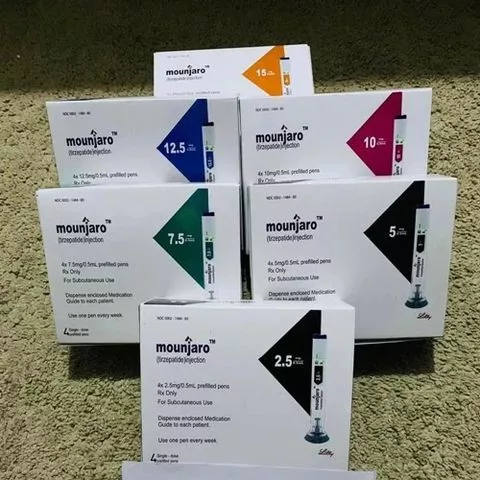Children’s books hold a special place in the world of literature. From beloved bedtime stories to imaginative picture books that spark curiosity, children’s literature plays a critical role in shaping young minds. But behind every charming tale and colorful illustration is a carefully planned process children’s book publishing.
Publishing a book for children is a journey that blends creativity with strategy. It’s about more than writing a story it’s about understanding your audience, collaborating with illustrators, meeting age-appropriate content standards, and finding the right publishing route to bring your book into the hands of young readers and their families.
Whether you’re a first-time author dreaming of publishing your debut picture book or a seasoned writer expanding into the children’s genre, understanding how the publishing process works can help you approach it with clarity and confidence.
What Makes Children’s Book Publishing Unique?
Children’s books differ significantly from books for older readers not just in length or style, but in purpose, format, and development. These books are written with specific age ranges in mind, which directly affects how the story is told, the type of illustrations used, and even how the book is physically produced.
For example, board books are intended for infants and toddlers, with sturdy pages and simple visuals. Picture books, designed for ages 3 to 7, combine storytelling with engaging illustrations that carry much of the narrative weight. Early readers, chapter books, and middle-grade novels all have their own structure, word count expectations, and content limitations.
Because children’s books are often read aloud by adults or caregivers, the storytelling voice must resonate with both the child and the reader. This dual appeal is part of what makes children’s book writing and publishing so distinctive and rewarding.
Developing Your Manuscript
The first step in publishing a children’s book is creating a strong manuscript. Children’s stories are deceptively simple; writing one that’s engaging, meaningful, and age-appropriate often requires multiple drafts and careful refinement.
You’ll want to focus on clarity, rhythm, and emotional resonance. In picture books, every word counts. Dialogue should feel authentic, while the narrative should leave room for illustrations to do some of the storytelling. In longer formats like chapter books or middle-grade novels, pacing, character development, and vocabulary level become more important.
Most children’s book publishers or publishing services recommend working with a developmental editor early in the process. An editor with experience in the genre can help shape your manuscript so it meets the expectations of publishers, educators, and young readers.
The Role of Illustrations
In children’s publishing, visuals are often just as important as the text—sometimes more so. For picture books in particular, the illustrations help convey the mood, characters, and plot in ways that words alone cannot.
If you’re self-publishing, you’ll need to hire an illustrator or work with a service that provides professional illustration packages. If you’re submitting to a traditional publisher, it’s generally not necessary or even recommended to find an illustrator yourself. Publishers usually prefer to pair your manuscript with an illustrator from their roster, whose style fits their market vision.
When hiring an illustrator independently, communication and collaboration are key. You’ll typically begin with character sketches and storyboard layouts before moving to full-page illustrations. A high-quality children’s book often includes 24 to 32 full-color pages, so this is one of the most time-intensive and important parts of the process.
Publishing Paths: Traditional vs. Self-Publishing
There are two primary routes to publishing a children’s book: traditional publishing and self-publishing. Each has its benefits and challenges.
Traditional Publishing
In the traditional model, you submit your manuscript to a literary agent or directly to a publisher that accepts unsolicited submissions. If accepted, the publisher manages the entire production process, including editing, illustration, design, printing, distribution, and marketing. You receive royalties from book sales and may be given an advance.
The main advantage of traditional publishing is access to professional support and widespread distribution, including placement in bookstores, libraries, and schools. However, the process is highly competitive and can be time-consuming. It may take months or even years to secure a contract and see your book in print.
Self-Publishing
Self-publishing offers full creative control and a faster timeline. You oversee every aspect of the book from choosing your illustrator and editor to handling formatting, cover design, printing, and marketing. Modern platforms like Amazon KDP, IngramSpark, and Barnes & Noble Press make it easier than ever to self-publish high-quality children’s books.
The self-publishing route requires a greater investment of time and resources. You’ll be responsible for managing production, ensuring quality, and building your own marketing plan. However, you also keep more of the profits and retain ownership of your work.
Some authors choose hybrid or assisted publishing models, where a service provider offers a package of editing, design, illustration, and marketing support. This can be especially helpful for first-time authors who want guidance without giving up control.
Formatting and Production
Children’s books are unique in how they are formatted and produced. Standard picture books, for instance, are typically 8.5” x 8.5” or 8” x 10” in size, with 24 or 32 full-color pages. These industry standards help ensure that your book fits well on bookshelves, printing presses, and in the hands of young readers.
Professional formatting includes proper layout of text and images, selection of fonts that are easy for children to read, and attention to visual spacing. These details may seem small but greatly affect the reader’s experience.
In print-on-demand self-publishing, it’s also important to prepare your files according to the specific guidelines of your printer. A seamless children’s book publishing solution will help with these technical aspects to avoid delays and ensure your book meets professional standards.
Marketing a Children’s Book
Marketing is one of the most challenging and essential parts of publishing a children’s book. Your target reader the child usually isn’t the one making the purchase. Parents, teachers, librarians, and caregivers are the gatekeepers, and your marketing must appeal to them while staying true to your book’s message and voice.
Effective strategies include:
-
Building a strong author website with a dedicated children’s book page
-
Reaching out to parenting bloggers, book reviewers, and teachers
-
Hosting school visits or virtual storytimes
-
Creating educational or activity-based content to accompany the book
-
Running social media campaigns targeted at caregivers and educators
Some authors also find success selling directly at events, local bookstores, or festivals. Others may explore partnerships with literacy programs or nonprofit organizations.
Marketing support is often included in full-service publishing packages and can significantly increase your book’s reach and impact.
Why Professional Support Matters
Children’s books may look simple, but they are among the most demanding types of books to produce. From the development of the manuscript to the alignment of illustrations, printing, and marketing, there are countless decisions to make. Working with professionals who understand the nuances of the genre can save time, improve quality, and reduce stress.
Companies like Pinnacle Literary Press offer dedicated children’s book publishing solutions that guide authors through every stage of the process. With experience in illustration coordination, formatting, editing, and marketing, these services are tailored to meet the unique needs of children’s authors.
Whether you’re publishing a single picture book or building a series, partnering with professionals helps ensure that your story is presented with the care, creativity, and professionalism it deserves.
Final Thoughts
Publishing a children’s book is a joyful and meaningful endeavor but it’s also a complex one. From shaping the story to bringing it to life with illustrations and reaching readers through marketing, every step matters.
Understanding the unique landscape of children’s book publishing gives you the tools to make informed choices, avoid common pitfalls, and deliver a final product that truly resonates with young readers and the adults who read with them.
With the right guidance, creativity, and strategy, your book can find its way into classrooms, bedrooms, and hearts across the world planting the seeds of imagination and learning in the next generation.



